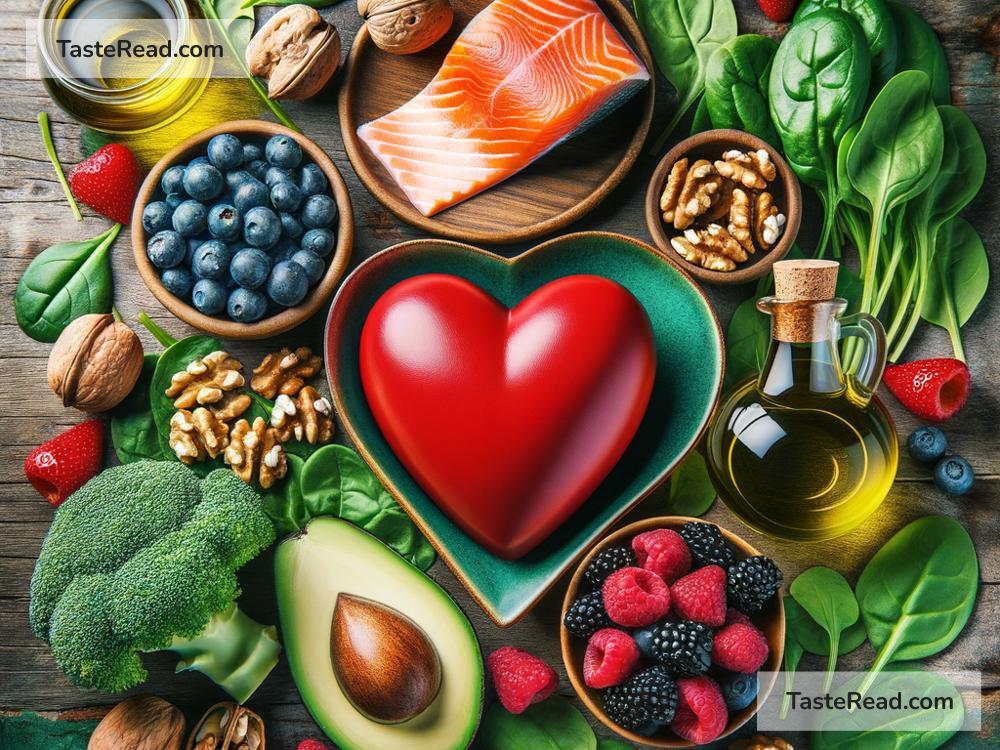Foods That Help Reduce Your Risk of Heart Disease
Heart disease is one of the leading causes of death worldwide, but the good news is that you can take steps to reduce your risk. One of the easiest and most effective ways to protect your heart is by eating healthier foods. What you eat can help lower your cholesterol, control your blood pressure, and protect your arteries. Let’s explore some simple, heart-friendly foods you can include in your diet.
Fruits and Vegetables: Nature’s Superfoods
Fruits and vegetables are loaded with vitamins, minerals, fiber, and antioxidants—all of which are great for heart health. They’re low in calories and saturated fat, making them the perfect choice for maintaining a healthy weight and supporting your heart.
Examples of heart-healthy fruits and vegetables:
– Berries: Strawberries, blueberries, and raspberries are rich in antioxidants that reduce inflammation and protect your blood vessels.
– Leafy Greens: Spinach, kale, and other dark green vegetables are packed with nutrients like potassium and magnesium, which help regulate blood pressure.
– Tomatoes: High in lycopene, tomatoes can help lower cholesterol and improve heart health.
– Avocados: Full of healthy fats and potassium, avocados can support healthy blood pressure levels and reduce bad cholesterol.
A simple tip: Aim for at least 5 servings of fruits and vegetables each day. Snack on apple slices, have a side of steamed broccoli, or toss some spinach into your morning smoothie.
Whole Grains: Fuel for a Healthy Heart
Whole grains are an excellent source of fiber, which can help reduce cholesterol levels and improve digestion. Refined grains, like white bread and sugary cereals, don’t have the same benefits because they lose their nutrients during processing. Instead, go for whole-grain options.
Examples of heart-healthy whole grains:
– Oats: Start your day with a bowl of oatmeal to help lower cholesterol.
– Brown Rice: Swap out white rice for brown rice to maximize fiber intake.
– Quinoa: This versatile grain is high in protein and fiber, which can lower heart disease risk.
– Whole-Wheat Bread: Choose whole-grain bread over white bread for sandwiches.
Remember, always check food labels when shopping. Look for words like “100% whole grain” or “whole wheat” to ensure you’re getting the best options.
Healthy Fats: Friend, Not Foe
Not all fats are bad. In fact, healthy fats are essential for heart health. Omega-3 fatty acids, found in certain fish and plant-based foods, can reduce inflammation and lower the risk of heart disease. Avoid trans fats and limit saturated fats, as these can increase cholesterol levels and harm your heart.
Examples of heart-healthy fats:
– Fatty Fish: Salmon, tuna, mackerel, and sardines are rich in omega-3s that protect your heart.
– Nuts and Seeds: Almonds, walnuts, flaxseeds, and chia seeds are fantastic sources of healthy fats and fiber.
– Olive Oil: Switch to extra virgin olive oil for cooking or salad dressings. It’s a great source of monounsaturated fats that lower bad cholesterol.
Instead of frying, try baking or grilling your food. These cooking methods preserve the nutrients and reduce unhealthy fat.
Legumes: The Plant-Based Protein Powerhouses
Legumes, like beans, lentils, and chickpeas, are another excellent choice for heart health. They’re rich in protein, fiber, and minerals but low in fat, making them a great meat alternative. Research shows that regularly eating legumes can lower bad cholesterol and help manage blood sugar levels.
How to add legumes to your diet:
– Make a hearty bean soup for lunch.
– Add chickpeas or black beans to your salads.
– Use lentils to make a satisfying vegetarian curry or stew.
Nuts and Seeds: Small but Mighty
Nuts and seeds are packed with heart-healthy nutrients, including unsaturated fats, fiber, and plant-based protein. Walnuts, for instance, are one of the best foods for heart health since they provide omega-3 fatty acids and antioxidants. Flaxseeds and chia seeds are also standout options for protecting your heart.
Just remember to watch your portion sizes—nuts and seeds are calorie-dense, so a small handful is enough for a healthy snack.
Dark Chocolate: A Sweet Heart Helper
Yes, you read that right—dark chocolate can be good for your heart! Cocoa contains flavonoids, which are plant-based compounds that improve blood flow and reduce inflammation in the body. Choose dark chocolate with at least 70% cocoa and enjoy it in moderation.
Limit Processed Foods and Sugary Drinks
While we’re focusing on foods that benefit your heart, it’s equally important to avoid foods that can harm it. Processed foods, sugary drinks, and snacks high in trans fats can increase your risk of heart disease. Too much salt can raise your blood pressure, and added sugars can contribute to weight gain.
Conclusion
Taking care of your heart doesn’t have to be complicated. By eating more fruits, vegetables, whole grains, healthy fats, legumes, nuts, seeds, and even a little dark chocolate, you can lower your risk of heart disease. Combine a healthy diet with regular exercise, stress management, and routine medical check-ups for a heart-healthy lifestyle.
Remember, small changes can make a big difference. Start by adding one or two of these foods to your daily meals, and stick with it over time. Your heart will thank you! ❤️


